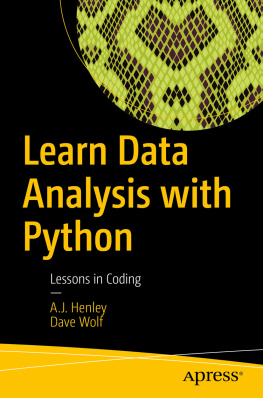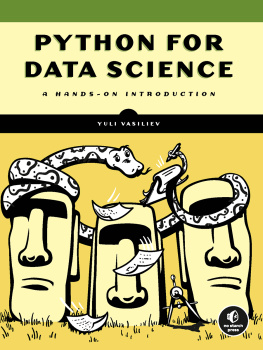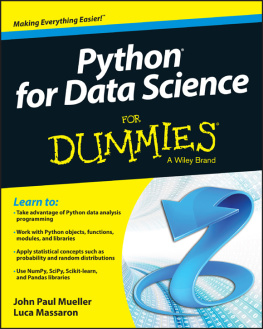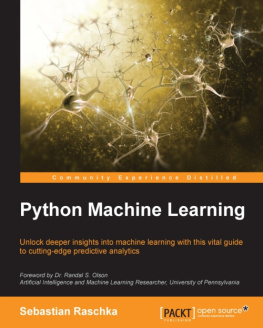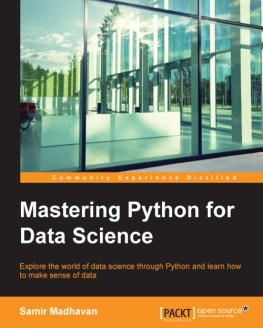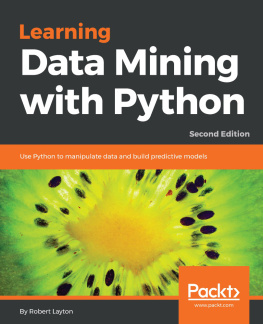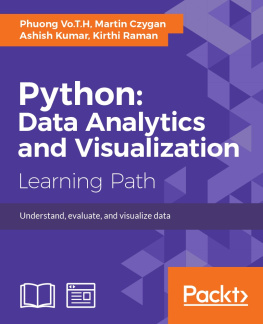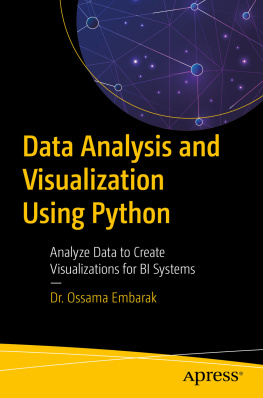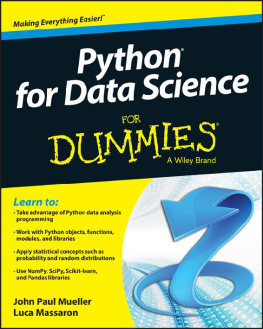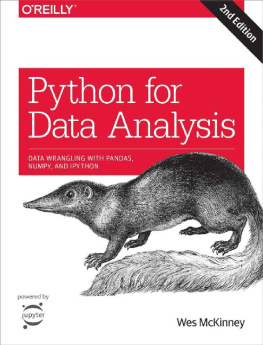coll. - Data Science with Python
Here you can read online coll. - Data Science with Python full text of the book (entire story) in english for free. Download pdf and epub, get meaning, cover and reviews about this ebook. year: 2016, publisher: Packt Publishing, genre: Home and family. Description of the work, (preface) as well as reviews are available. Best literature library LitArk.com created for fans of good reading and offers a wide selection of genres:
Romance novel
Science fiction
Adventure
Detective
Science
History
Home and family
Prose
Art
Politics
Computer
Non-fiction
Religion
Business
Children
Humor
Choose a favorite category and find really read worthwhile books. Enjoy immersion in the world of imagination, feel the emotions of the characters or learn something new for yourself, make an fascinating discovery.
- Book:Data Science with Python
- Author:
- Publisher:Packt Publishing
- Genre:
- Year:2016
- Rating:3 / 5
- Favourites:Add to favourites
- Your mark:
Data Science with Python: summary, description and annotation
We offer to read an annotation, description, summary or preface (depends on what the author of the book "Data Science with Python" wrote himself). If you haven't found the necessary information about the book — write in the comments, we will try to find it.
Unleash the power of Python and its robust data science capabilities
About This Book- Unleash the power of Python 3 objects
- Learn to use powerful Python libraries for effective data processing and analysis
- Harness the power of Python to analyze data and create insightful predictive models
- Unlock deeper insights into machine learning with this vital guide to cutting-edge predictive analytics
Entry-level analysts who want to enter in the data science world will find this course very useful to get themselves acquainted with Pythons data science capabilities for doing real-world data analysis.
What You Will Learn- Install and setup Python
- Implement objects in Python by creating classes and defining methods
- Get acquainted with NumPy to use it with arrays and array-oriented computing in data analysis
- Create effective visualizations for presenting your data using Matplotlib
- Process and analyze data using the time series capabilities of pandas
- Interact with different kind of database systems, such as file, disk format, Mongo, and Redis
- Apply data mining concepts to real-world problems
- Compute on big data, including real-time data from the Internet
- Explore how to use different machine learning models to ask different questions of your data
The Python: Real-World Data Science course will take you on a journey to become an efficient data science practitioner by thoroughly understanding the key concepts of Python. This learning path is divided into four modules and each module are a mini course in their own right, and as you complete each one, youll have gained key skills and be ready for the material in the next module.
The course begins with getting your Python fundamentals nailed down. After getting familiar with Python core concepts, its time that you dive into the field of data science. In the second module, youll learn how to perform data analysis using Python in a practical and example-driven way. The third module will teach you how to design and develop data mining applications using a variety of datasets, starting with basic classification and affinity analysis to more complex data types including text, images, and graphs. Machine learning and predictive analytics have become the most important approaches to uncover data gold mines. In the final module, well discuss the necessary details regarding machine learning concepts, offering intuitive yet informative explanations on how machine learning algorithms work, how to use them, and most importantly, how to avoid the common pitfalls.
Style and approachThis course includes all the resources that will help you jump into the data science field with Python and learn how to make sense of data. The aim is to create a smooth learning path that will teach you how to get started with powerful Python libraries and perform various data science techniques in depth.
coll.: author's other books
Who wrote Data Science with Python? Find out the surname, the name of the author of the book and a list of all author's works by series.








